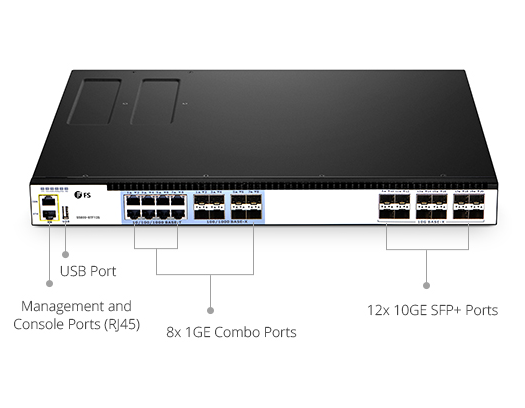Network switch, a box-shaped device, plays an important role in a network deployment. To achieve high network performance, a suitable switch is required. There are smart managed switch and unmanaged switch on the market. How much do you know about them? Smart managed switch vs. unmanaged switch, which one should you choose for your network deployment? Keep reading, and you will find the answer.
Smart Switch Vs. Managed Switch
If you look through the official website of several vendors, you may find that some offer smart switch, the others provide managed switch. Smart switch vs. managed switch, what’s the different between them? Smart switch has some features that managed switch has, but are more limited. Besides, smart switch is cheaper than managed switch. So, it’s a cost-effective alternative to managed switch. In fact, “smart switch” and “managed switch” are terms invented by vendors. And the exact meaning may vary from vendor to vendor. To some extent, smart switch and managed switch are virtually the same. In the following part, I combine them as smart managed switch for easy reading.
Smart Managed Switch Vs. Unmanaged Switch
As smart managed switch and unmanaged switch have different features, they are used in different applications.
Smart managed switch offers features like QoS (Quality of Service), Simple Network Management Protocol (SNMP), command line interface (CLI), Rapid Spanning Tree Protocol (RSTP), redundancy capability, VLANs, LACP and so on. The greatest advantage of smart managed switch is that you can change the configuration of the switch to satisfy your specific networking needs. Smart managed switch is especially suitable for enterprises that need to manage and troubleshoot their network remotely and securely, allowing network managers to monitor and control the traffic to achieve optimal network performance and reliability. The following figure shows FS S5800-8TF12S managed switch which provides high port density with 8-port 1GbE RJ45 and 8-port 1GbE SFP combo and 12-port 10GbE uplink in a compact 1RU form factor.
 FS S5800-8TF12S managed switch
FS S5800-8TF12S managed switch
Unmanaged switch is basic plug-and-play switch with no remote configuration, management, or monitoring options. It allows Ethernet devices to communicate with one another (such as a PC or network printer) by providing a connection to the network and passing on information to where it needs to go. Therefore, unmanaged switch is usually used to extend the number of Ethernet ports. Unmanaged switch can be desktop or rack mounted. It is less expensive than smart managed switch and is suitable for home use, SOHO and small businesses.
Which One to Choose?
From the above content, we can conclude that smart managed switch vs. unmanaged switch, the biggest difference between them is the configuration feature. As for which one to choose, it really depends on your need. If you just want to set up a home network or add more Ethernet ports, unmanaged switch is good enough. If you need configuration options like VLAN and QoS, you will have to use smart managed switch.
